Culture Dayak, island of Borneo, Indonesia
First half of the 20th century
Wood, vegetable fibers, bone, antler, iron, brass, cloth and coin
Long. total: 70.5; W .: 11; Long. blade: 53 cm
The handle, called ulu, is in antler sculpted with a stylized anthropomorphic mask and decorated with two hair toupees. The figure shows pointed incisors, eyes in globular pellets, long ears sculpted with volutes, a headgear with geometric frieze patterns. The side parts are carved with the motif of the leech and presumably stylized elephants. The antler is ligated to the blade and ringed with a rounded skin yoke adorned with a coin dated 1941 and bearing the words “Nederl. Indie.
The blade is very richly inlaid with gilded brass, in a pellet arranged in rows of three, following an incised grid, covering the entire length. The blade is single-edged and finished obliquely on the tip. The scabbard, called Kumpang, consists of two wooden slats partly covered with fabric with beige plant patterns on a red background. The front part of the scabbard is engraved with scroll patterns and punctuated by three rings of ligated plant fibers. The rear part - in contact with the body, supports a fabric band from which is suspended a braided cord terminated by a wooden button, forming a suspension strap.
A second scabbard is associated with it, containing a knife called Pisau raut, used to cut arrows. The lower end has two inserts of bone. The mandau are now associated with head hunting ceremonies. They relate to both weaponry and prestige. They belonged to hunters and warriors, passed down from generation to generation. It is said that these weapons were endowed with supernatural powers. The spirit was stuck in a hair, placed on the hilt of the sword. The sacred combination of the mandau is amplified by the combination of the materials of the fabric and the antler.
Text and photos © FCP CORIDON




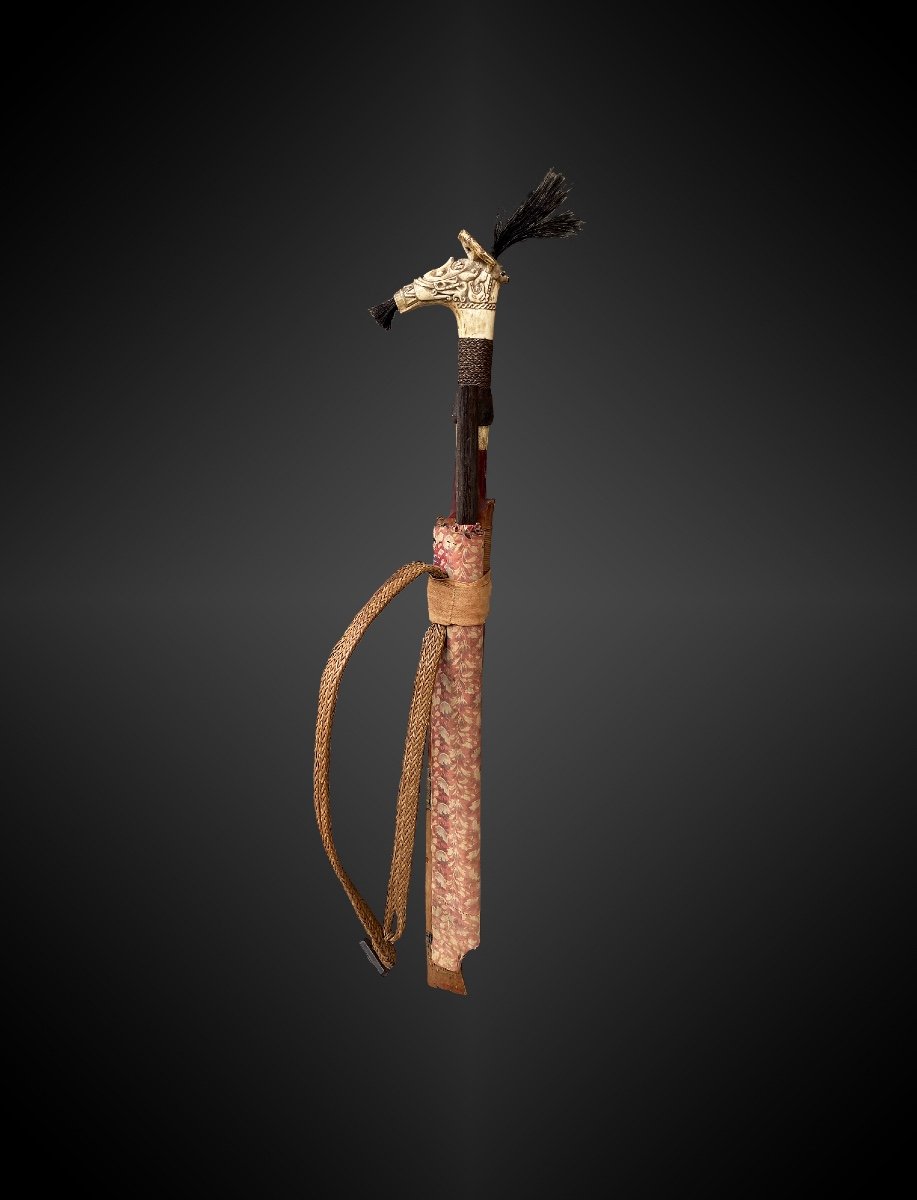
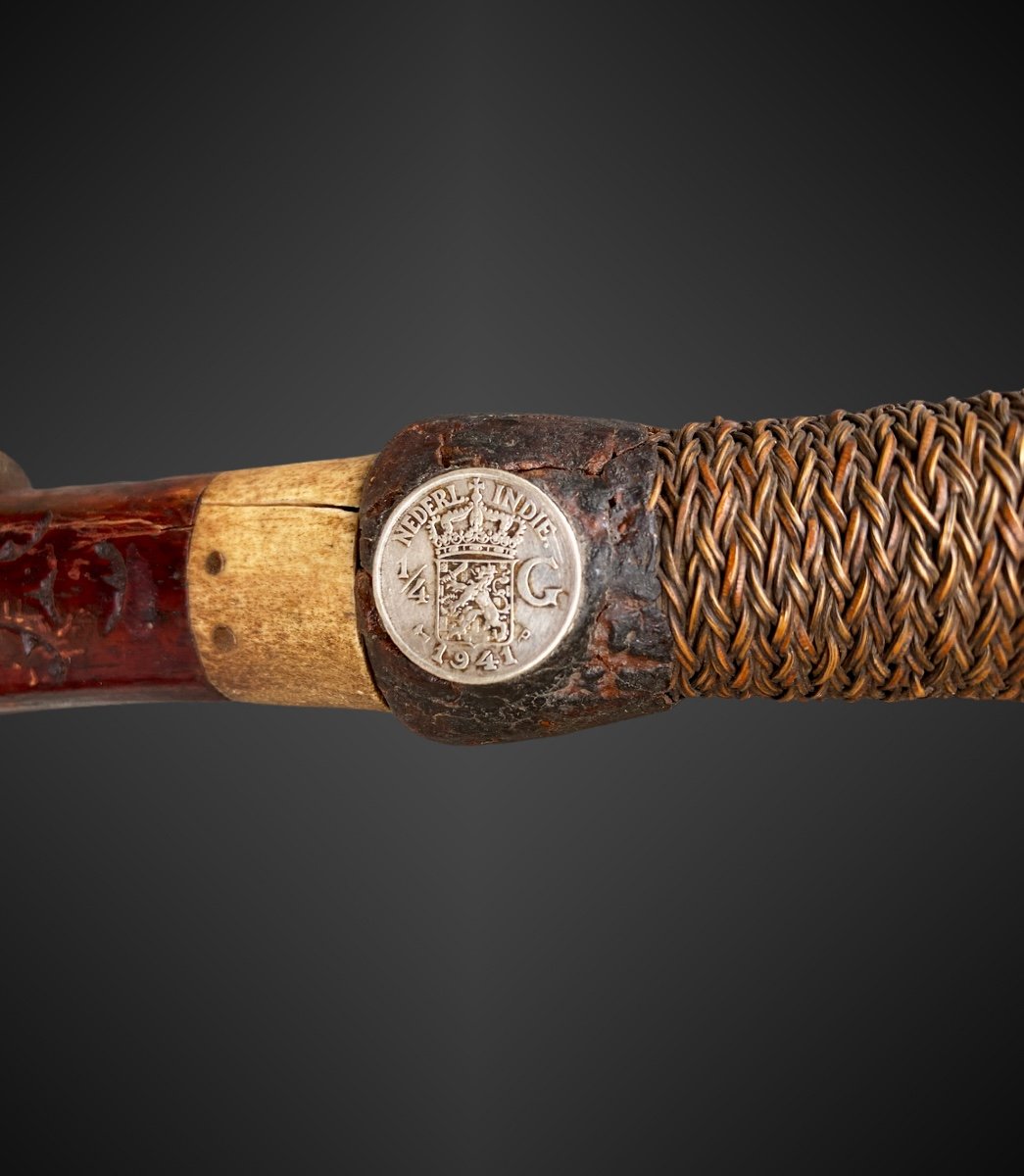
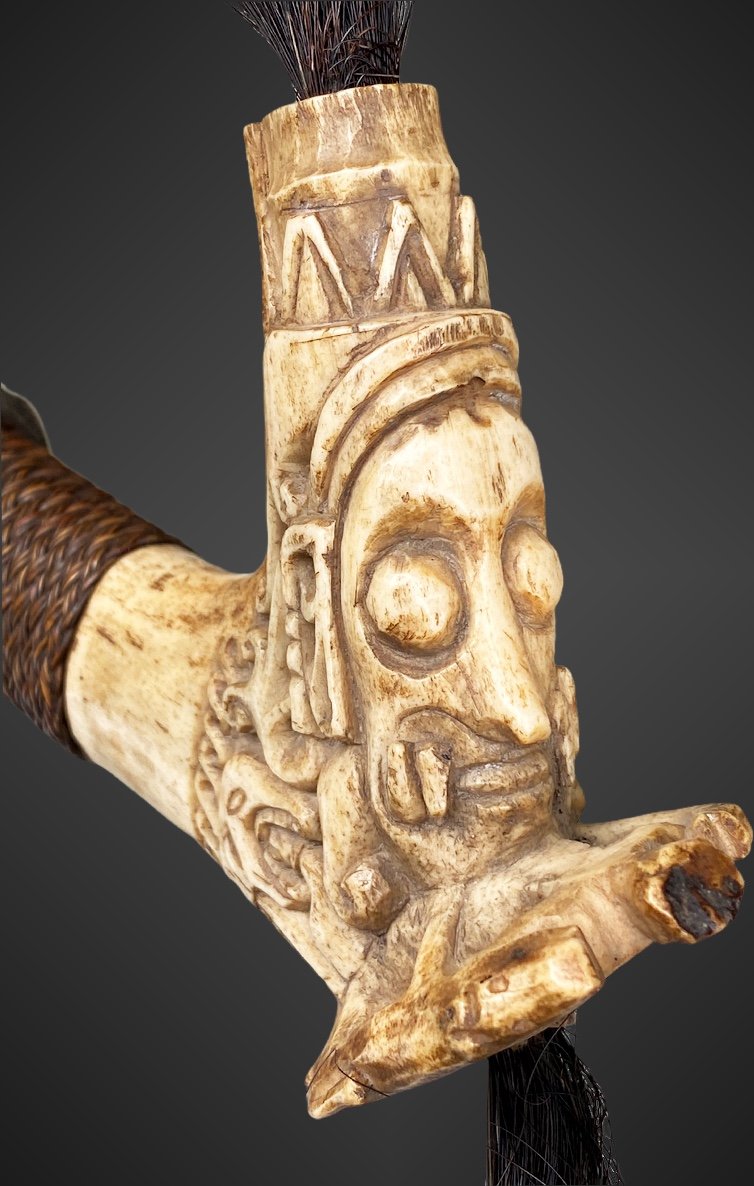
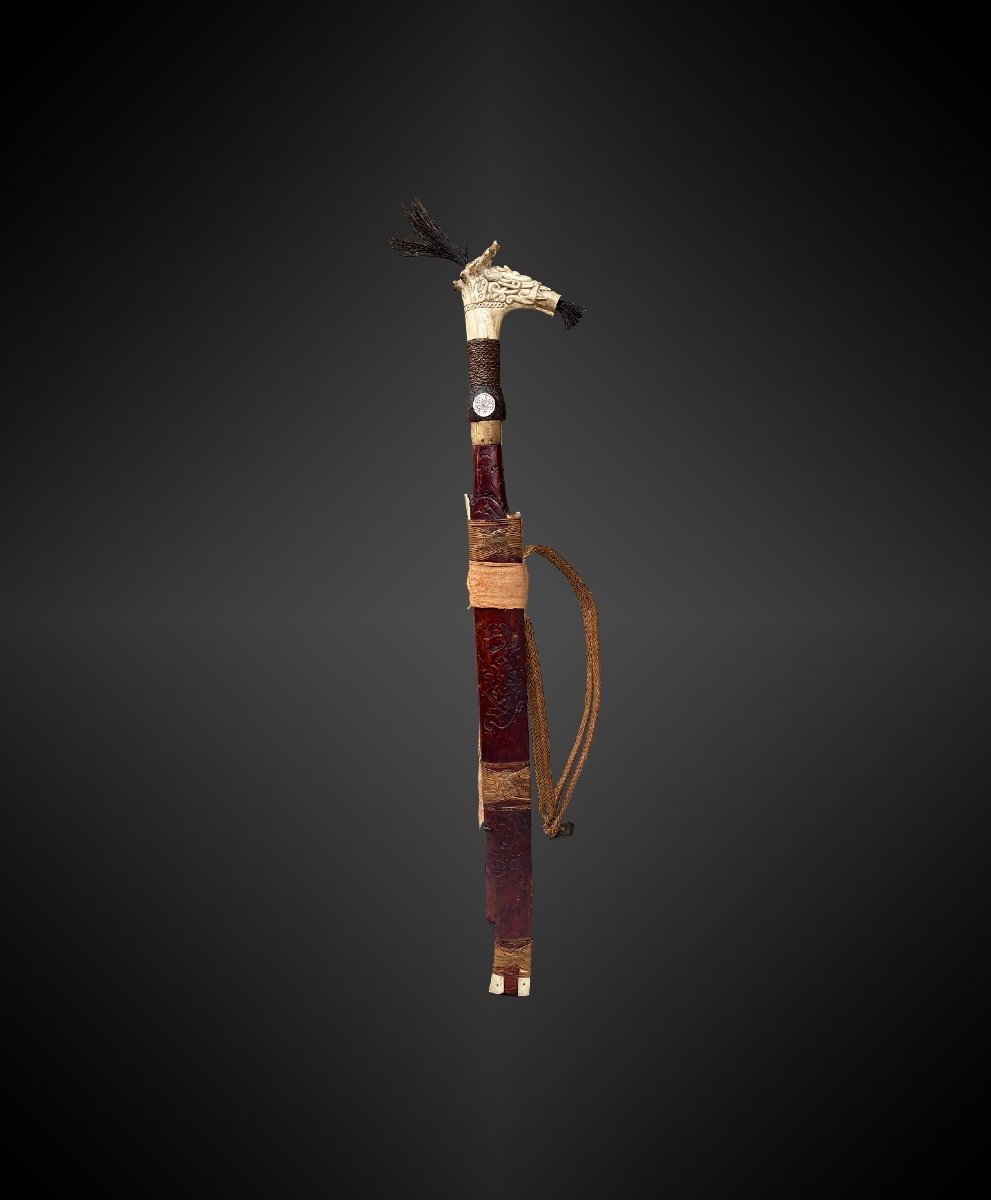


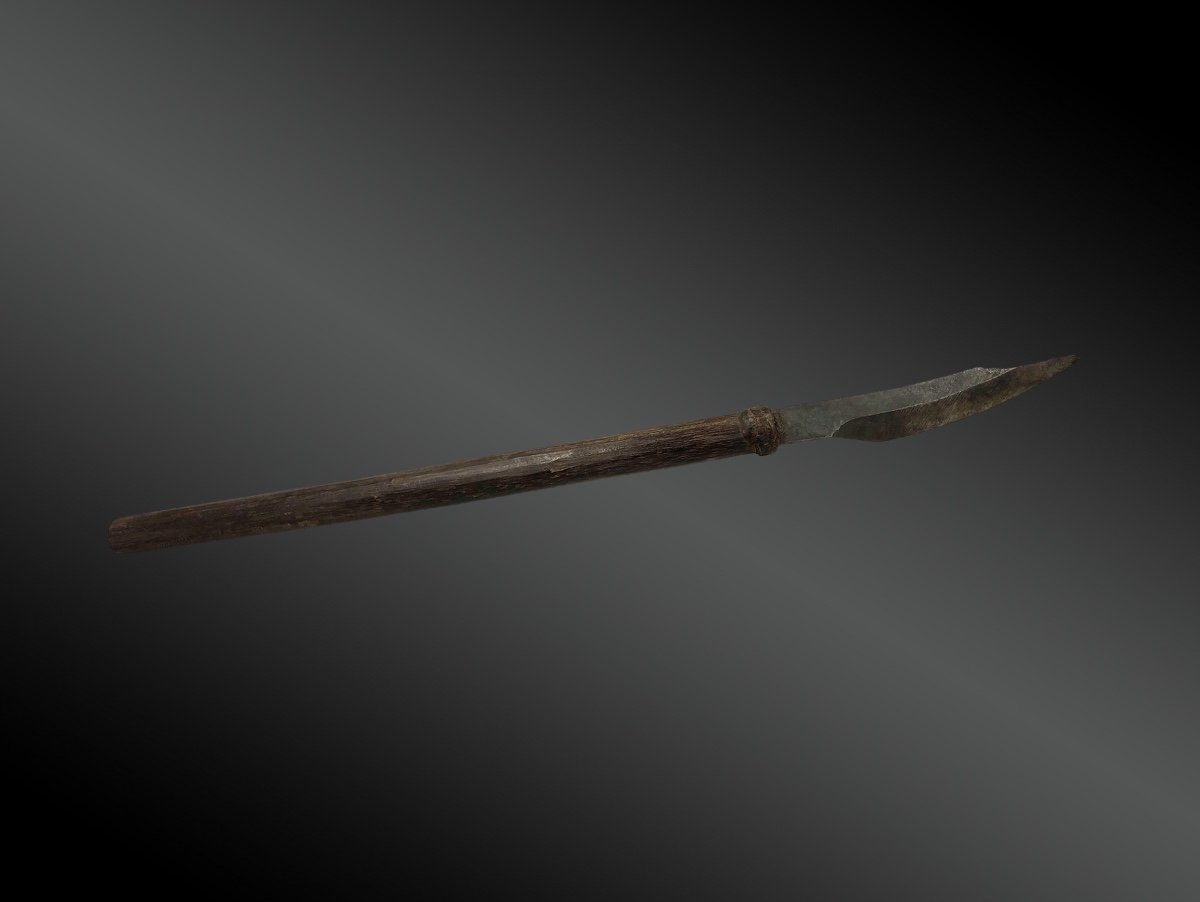
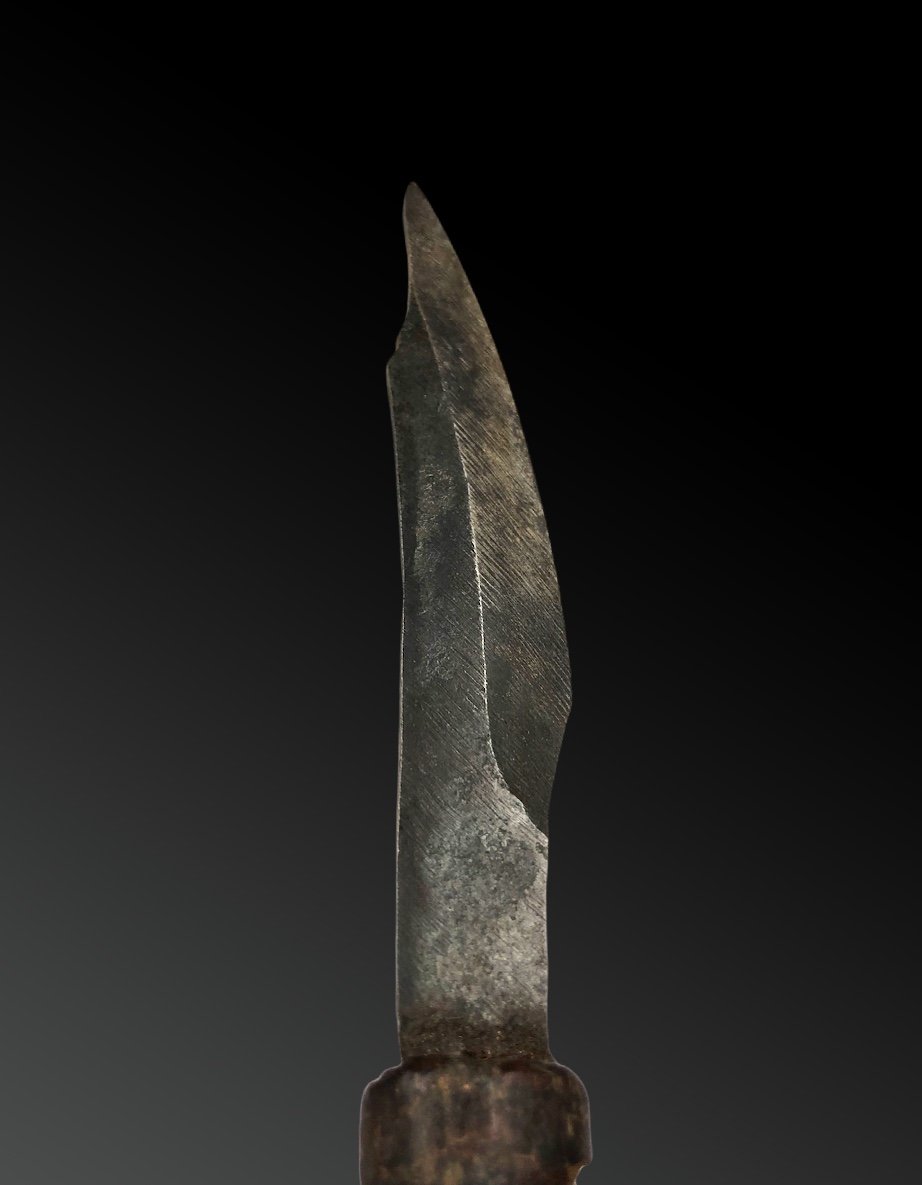
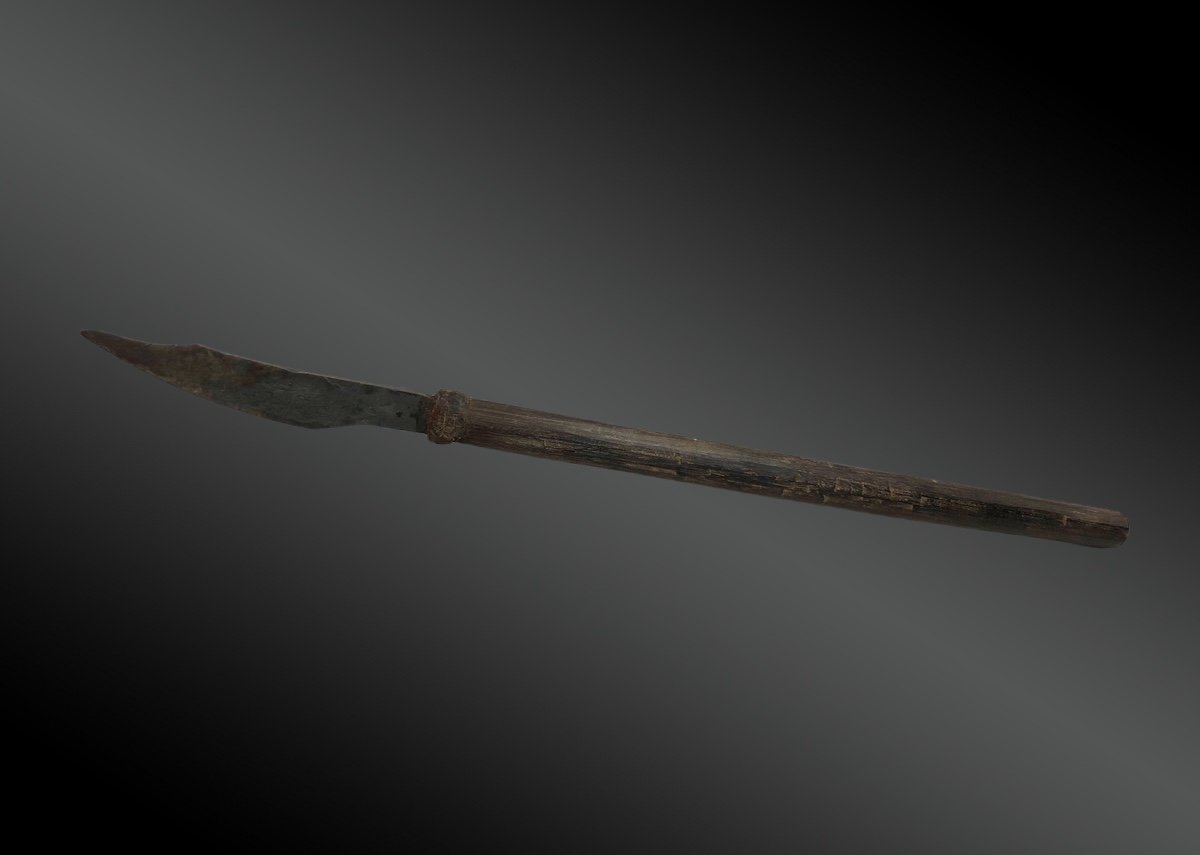

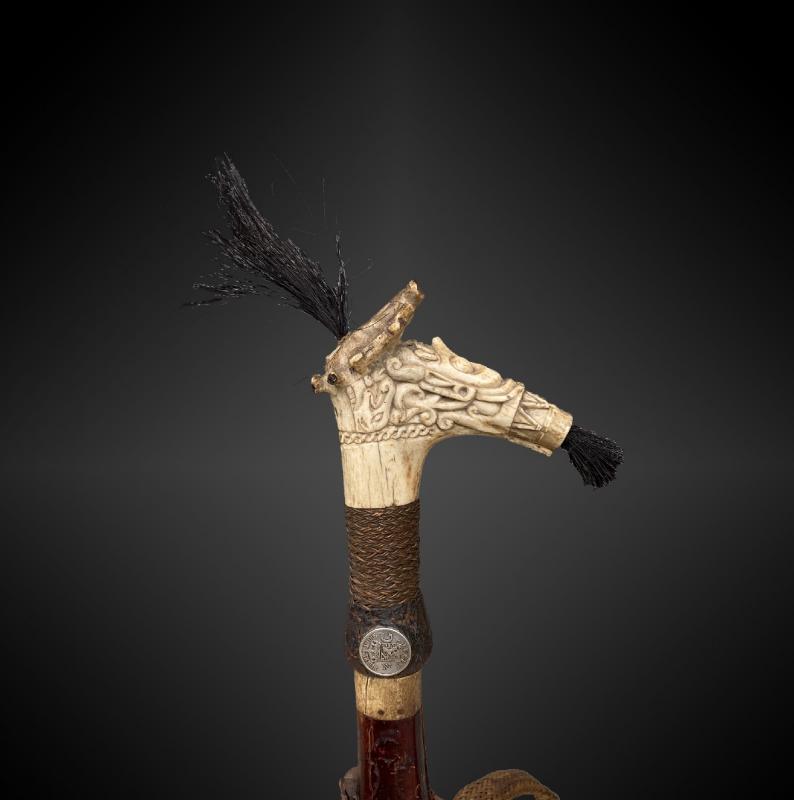




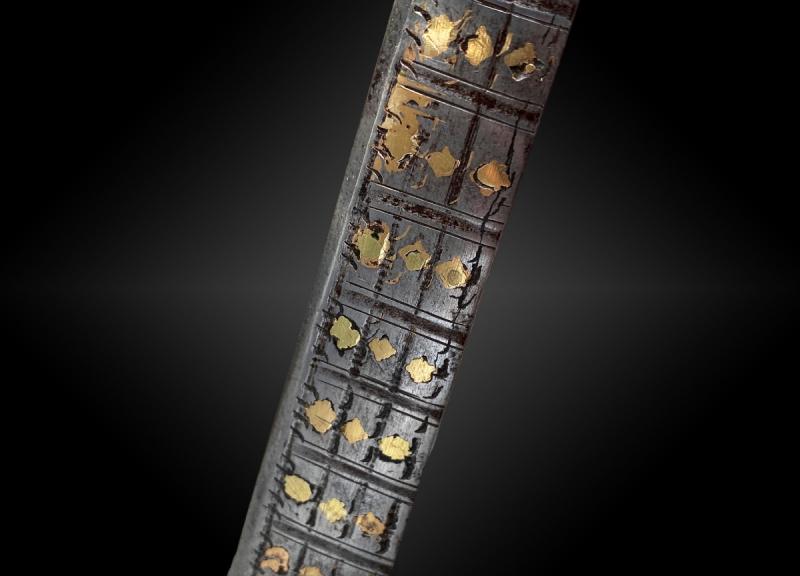





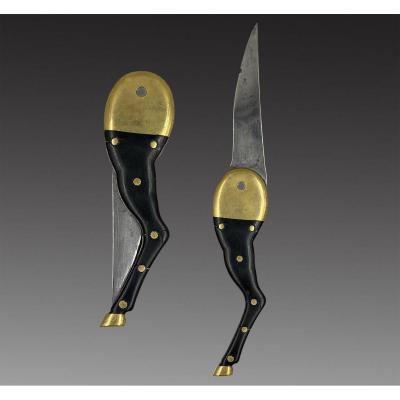



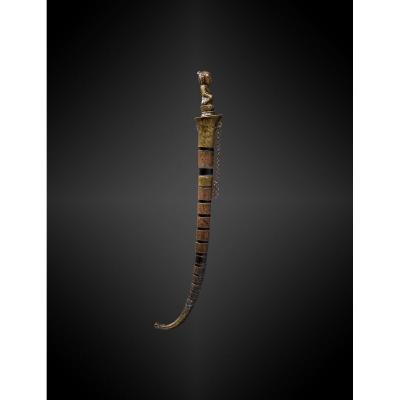
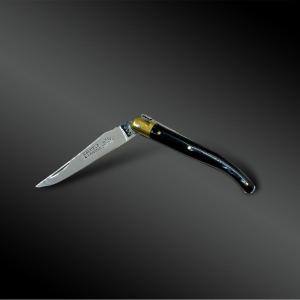

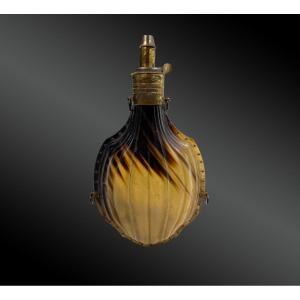
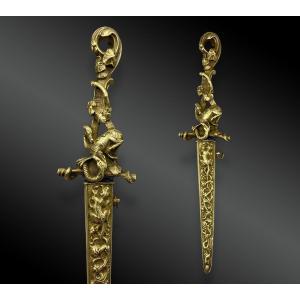


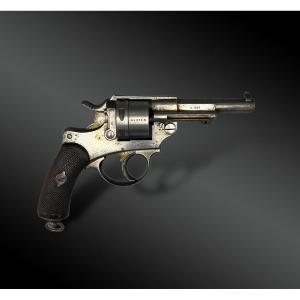



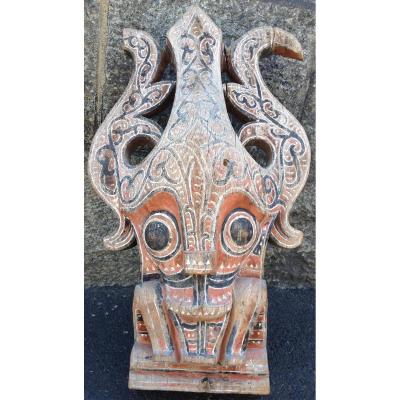
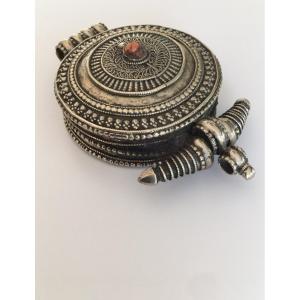
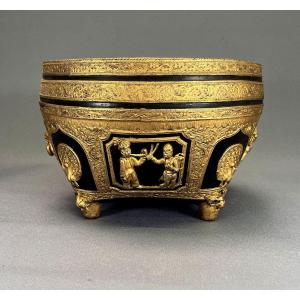

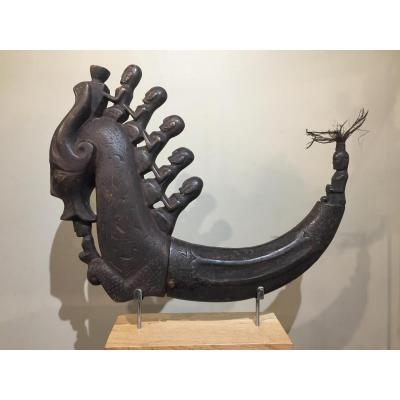



 Le Magazine de PROANTIC
Le Magazine de PROANTIC TRÉSORS Magazine
TRÉSORS Magazine Rivista Artiquariato
Rivista Artiquariato